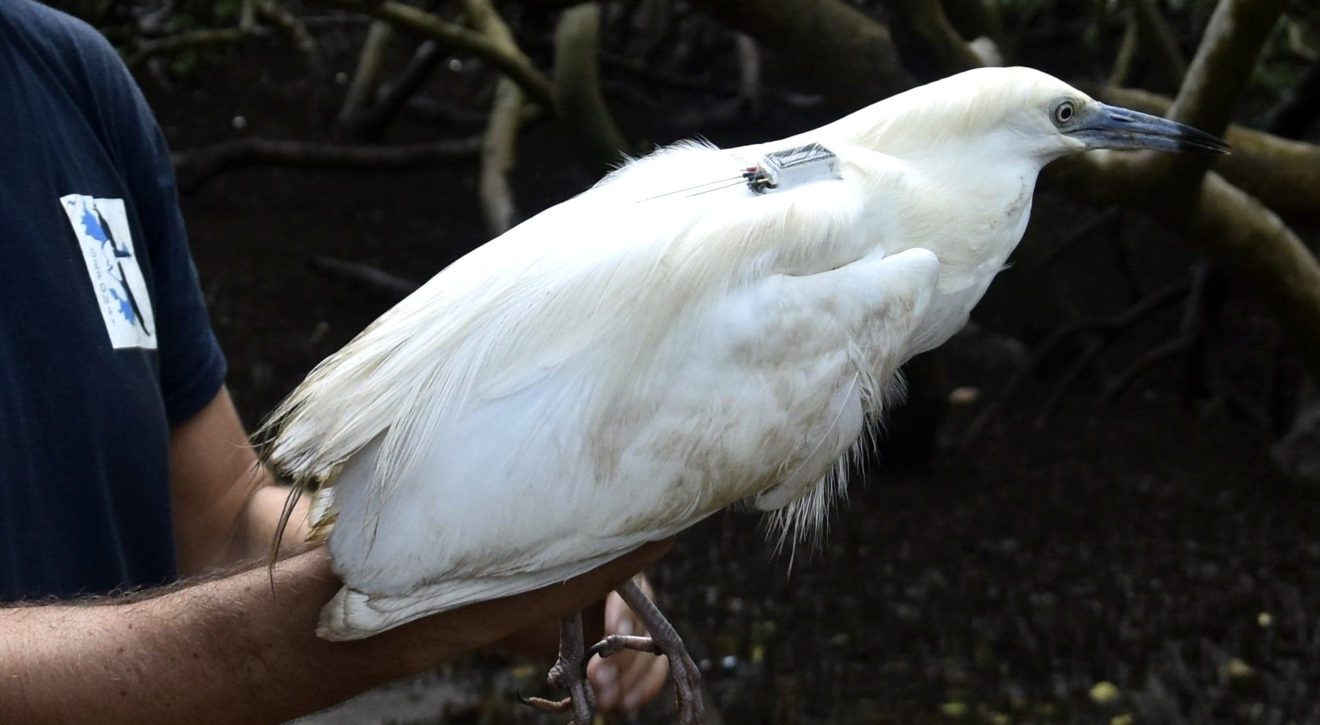Endangered herons tagged in new project
Six Malagasy Pond Herons have been tagged in a new project aimed at better understanding the life cycles of this rare and declining ardeid.
Malagasy Pond Heron is a small heron closely related to the more familiar Squacco Heron, but in summer takes on a beautiful all-white plumage with a vivid blue bill. It breeds on just four islands – Madagascar, Aldabra, Europa and Mayotte – with some individuals moving to the East African mainland outside this period. The world population is estimated at 1,300-4,000 individuals and is thought to be decreasing, with the IUCN Red List categorising it as Endangered.
The species is threatened by the loss and degradation of wetlands, which are crucial for breeding and feeding, and by the disturbance of nests and poaching of eggs and chicks. Predation of eggs and juveniles by rats is also suspected, but currently unproven.

An adult Malagasy Pond Heron equipped with a tag and ready to be released (Alexandre Laubin / LPO).
Despite Malagasy Pond Heron's bleak conservation status, precious few studies have been undertaken into its biology. This year's project, which has been conducted on the French overseas department of Mayotte, will continue until 2021 and equip 15 adult herons with GPS tags. It aims to better understand the ecology and life cycle of the species, and specifically provide answers to the following conundrums:
- Whether the heron's feeding areas need to be better managed or conserved;
- Whether individuals from the same colony feed at the same localities or in different areas, and whether individuals always favour the same feeding sites or move between different areas;
- How far adults travel during the breeding season;
- Where birds go outside the breeding season and whether the birds return to the same breeding grounds each year.
On Mayotte, Malagasy Pond Heron breeds in mangrove forests, a challenging terrain which made the capture of a sufficient number adult birds a difficult task. However, after 11 days, six birds had been caught and fitted with transmitters, and some of these are already producing valuable insights into their movements.
Find out more about the project at www.lifebiodivom.fr/especes/crabier-blanc.

